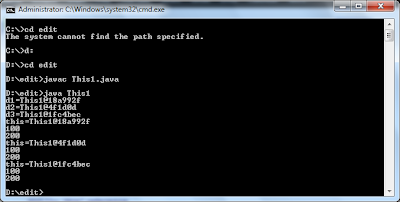Java interview questions are provided here for the convenience of interviews. Fresher don't have any idea about the java question asked by interviewers in a java interview. Questions asked in java interview can be from any where. They can be from java development to java evolution. So here i am providing some important java interview questions for the java interviews. It will help them a lot in cracking a java interview. A list of java interview questions is given below-
Question: Why Was Java Developed?
Ans: Java was developed to provide the concept of platform independence by James Gosling and his team.
Question: What is java?
Ans: Java is the trademark of SUN MICRO SYSTEM.
Note: There is no full form of java.
Java is combination of 3 things:
(1)Oops
(2)Platform
(3)Technology
Question: What is program?
Ans: Program is set of instructions to perform the specific task.
Question: What is programming language?
Ans: Programming Language is a mode of human communication with the computer.
Question: What is a high-level-language(hll)?
Ans: A high level language is a language which is-
(1)Pure english language
(2)Human understandable language
(3)Source code also in high level language.
Question: What is middle level language?
Ans: (1)It is intermediate language code.
(2)It contains byte code.
(3)MLL code like mnemonics.
(4)Format of mnemonics looks like a(microprocessor commands)ADD,move,MUL,SUB(low level).
(5)Humane cannot understand ,that code.
(6)But Assembly and micro processor commands in Low Level .
Question: What is Low Label Language?
Ans: 1.Machine(OS) understandable code.
2.Pure binary(0/1) data.
3.But Assembly and micro processor commands(ADD,MOVE,MUL,SUB) in Low Level
.
Question: Why Was Java Developed?
Ans: Java was developed to provide the concept of platform independence by James Gosling and his team.
Question: What is java?
Ans: Java is the trademark of SUN MICRO SYSTEM.
Note: There is no full form of java.
Java is combination of 3 things:
(1)Oops
(2)Platform
(3)Technology
Question: What is program?
Ans: Program is set of instructions to perform the specific task.
Question: What is programming language?
Ans: Programming Language is a mode of human communication with the computer.
Question: What is a high-level-language(hll)?
Ans: A high level language is a language which is-
(1)Pure english language
(2)Human understandable language
(3)Source code also in high level language.
Question: What is middle level language?
Ans: (1)It is intermediate language code.
(2)It contains byte code.
(3)MLL code like mnemonics.
(4)Format of mnemonics looks like a(microprocessor commands)ADD,move,MUL,SUB(low level).
(5)Humane cannot understand ,that code.
(6)But Assembly and micro processor commands in Low Level .
Question: What is Low Label Language?
Ans: 1.Machine(OS) understandable code.
2.Pure binary(0/1) data.
3.But Assembly and micro processor commands(ADD,MOVE,MUL,SUB) in Low Level
.











